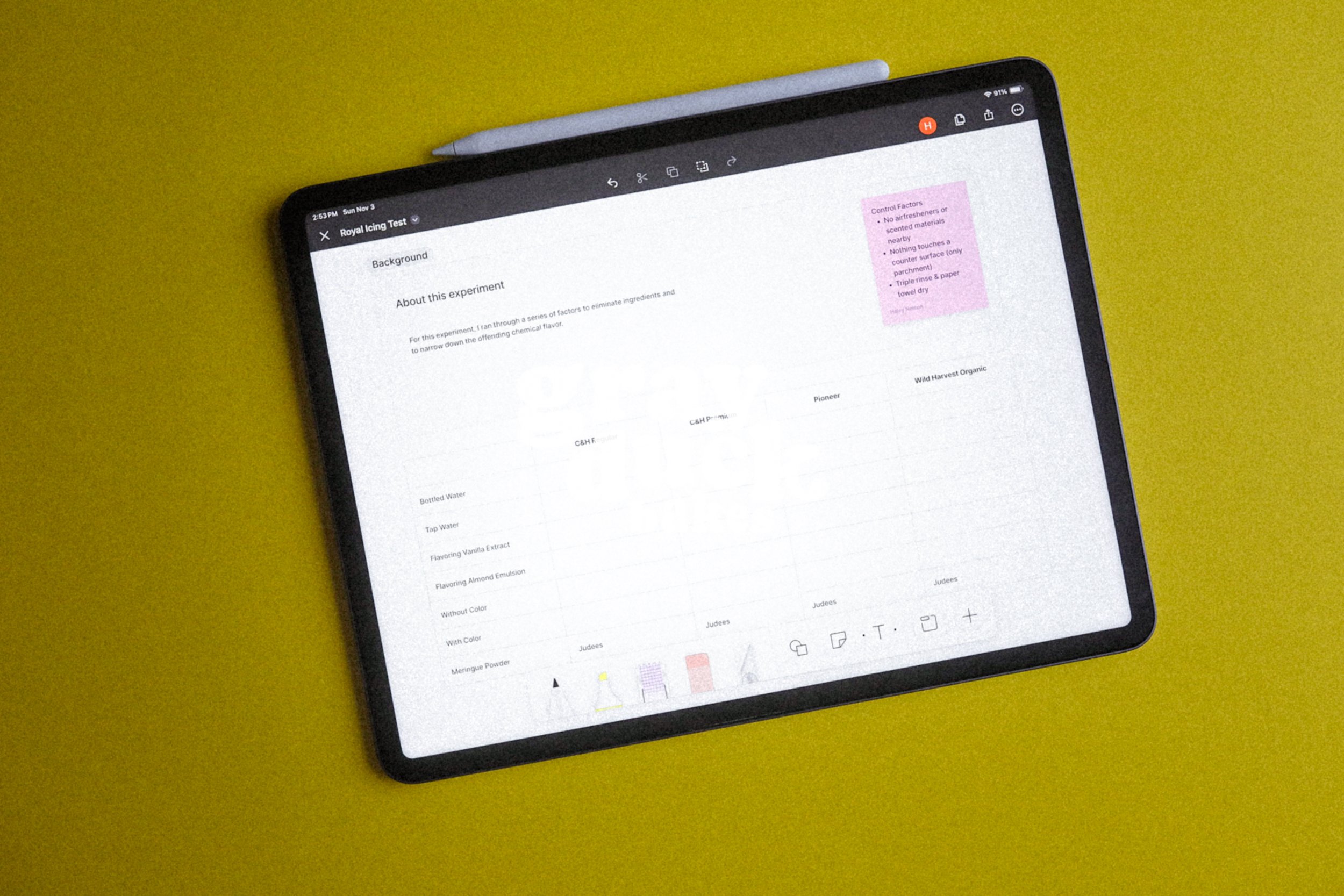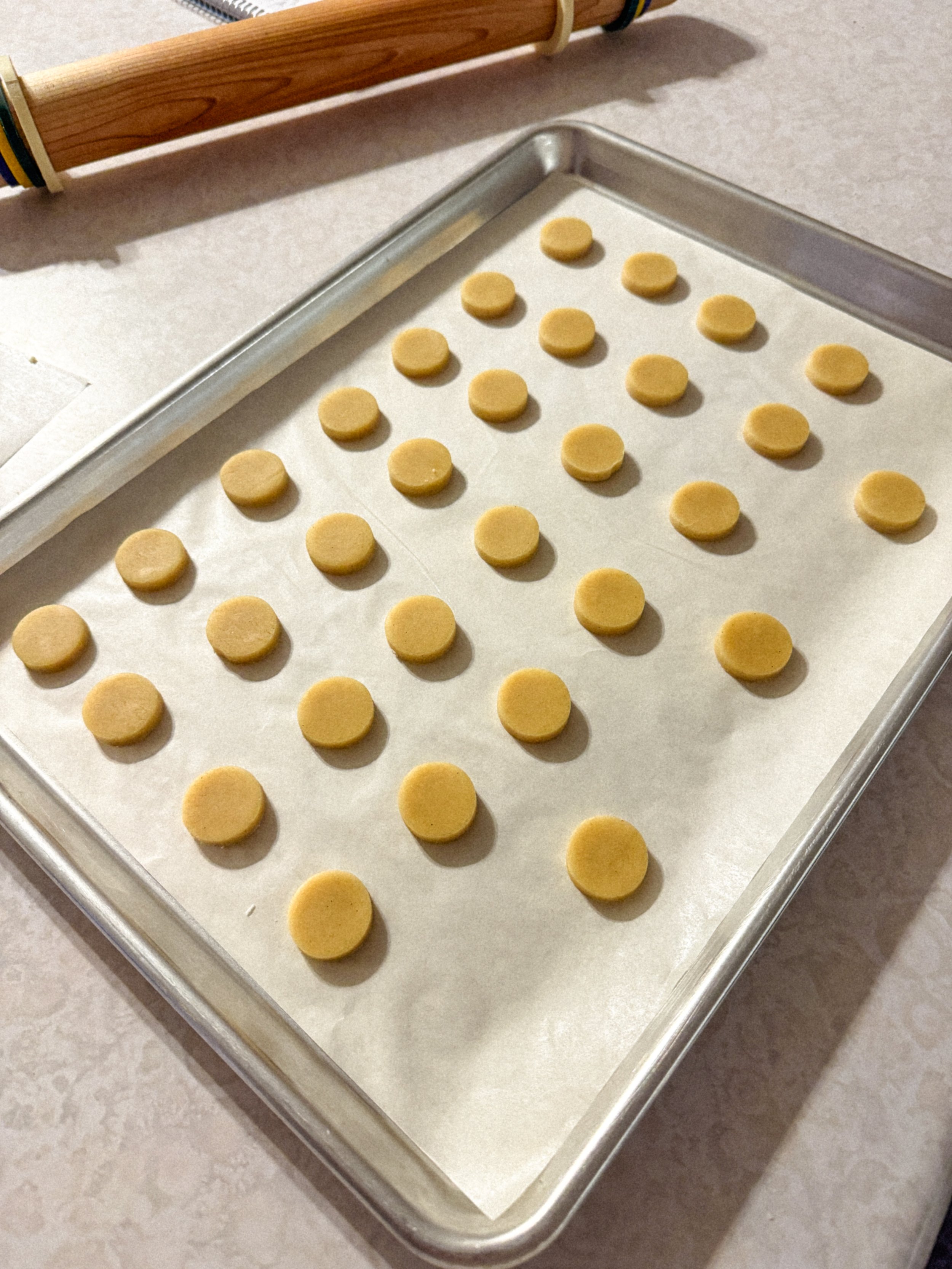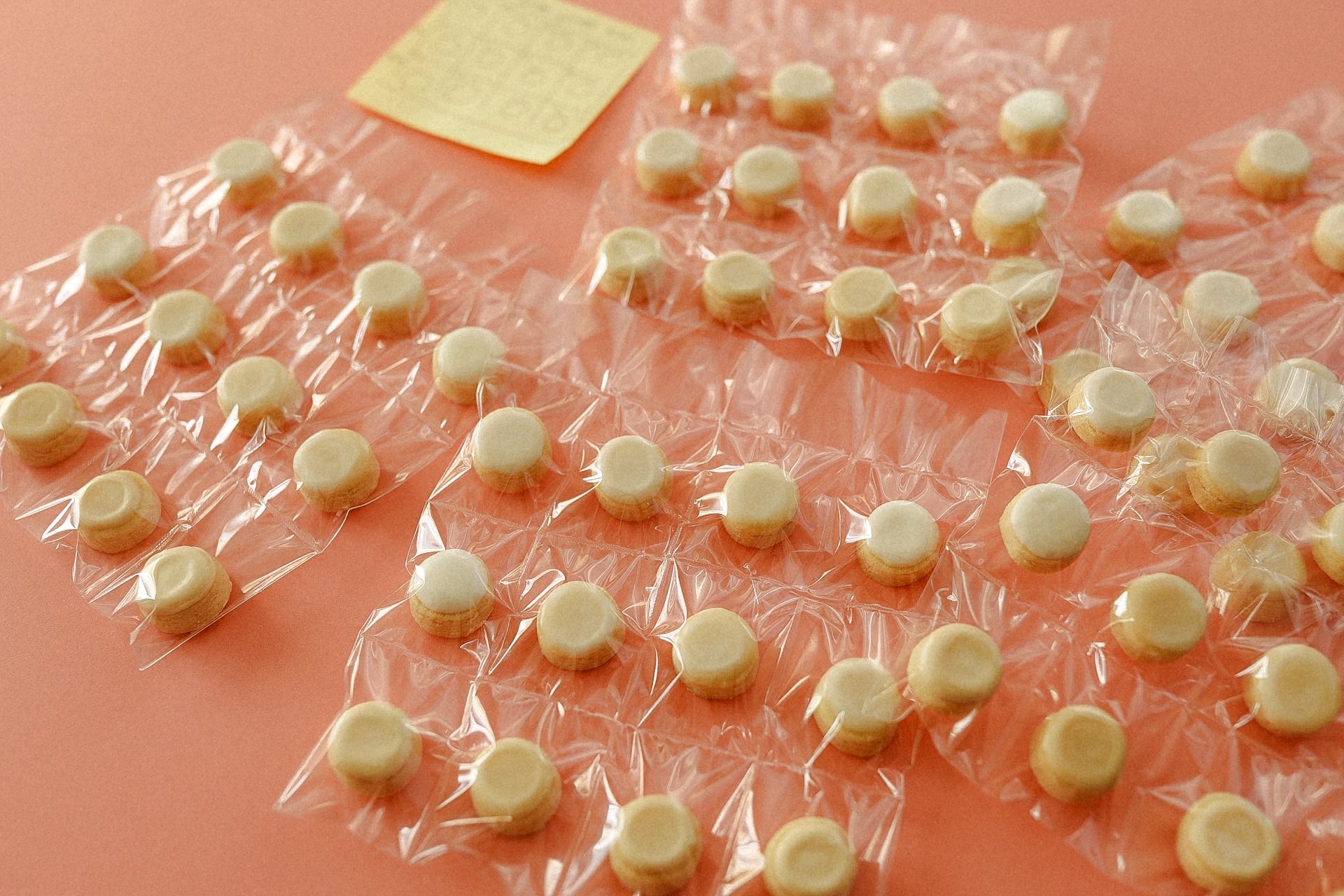Confectioners Sugar Experiment Part 1
Powdered sugar is used to create royal icing, a main attribute of decorated sugar cookies.
Background
After a few batches of royal icing came out with a subtle, but unwanted, floral flavor, I reached out to my favorite cookie communities to see if anyone else has had this experience and what troubleshooting tips they have to narrow down the culprit.
This blog post will provide a full list of troubleshooting tips to prevent unwanted flavors being absorbed into your royal icing and the next round of experimentation you can try at home to solve the problem. It will also provide background into the testing methodology I used to evaluate the powdered sugar brands. I will create a part 2 to this blog post with the results after testing is complete.
Troubleshooting Tips
If your royal icing has a distinct, but subtle, floral flavor, there could be a few factors at play. It’s important to rule these out before moving on to the next round of experimentation. Check out the tips below to start troubleshooting:
Tip 1: No wire hangers air fresheners, ever!
Did you know that royal icing absorbs scents when it’s wet? That means if you have a scented candle, febreeze — or any other type of air freshener nearby when you’re decorating your cookies, they’ll absorb that flavor. To fix: remove and unplug all scented materials from your baking area and open a window to allow fresh air to fill the space. Bonus tip: check your laundry detergent, too. Scents can be absorbed from clothing as well.
Tip 2: Thoroughly rinse your baking supplies.
This one should seem obvious but it’s worth calling out. If not properly rinsed, washing detergents can leech into royal icing, giving a detergent flavor. To fix: double rinse all baking supplies and dry them with a paper towel (yes, laundry detergent can linger, too) then do the smell check. If you can’t smell anything, you’re good to go. If you can, rinse again until you can’t smell anything.
Tip 3: Check your water source.
If you’re like me and the water coming out of the tap has an oddly distinct chemical flavor, that might impact your icing more than you think. A glass of water left on the counter for a few hours might reveal an unpleasant flavor — if you think about that more, it’s a flavor that will also be absorbed into your cookies. To fix: Use filtered or bottled water. (I know this isn’t ideal, but it might save you some heartache).
Testing Methodology
Because I do user testing as part of my day job, I followed a similar structure for testing icing. I created a table with different criteria so that I could easily track notes and responses from those who will test out the different cookies. This will help me quickly synthesize the data and visualize any key themes that emerge.
Test Structure
For this experiment, I tested three brands (I know the main image has four bags, but I had to quit after 3 because I ran out of containers) to see if the offending flavor could be narrowed down to one of them. Each batch was created using the same exact method, timing, and measurements — with the varying factors being water source, and flavoring. Example below:
Icing Structure Example
Pioneer, Container #1: Regular (tap) water, Mexican vanilla only
Pioneer, Container #2: Regular (tap) water, Mexican vanilla & almond emulsion
Pioneer, Container #3: Bottled water, Mexican vanilla
Pioneer, Container #4: Bottled water, Mexican vanilla & almond emulsion
Note: This process was repeated for all three brands.
Icing Method
Each batch of icing followed the exact same process, it’s broken down below:
Meringue powder + water was whisked until foamy (1 min)
Add in half powdered sugar and mix on low speed (2) for 2 minutes
Add in remaining powdered sugar and water plus vanilla, then mix on medium speed (5) for 5 minutes
Split the batch into two containers and add almond emulsion to one
My handwriting is atrocious, which is why I track using a digital table lol.
Conducting the test
In order for this test to be successful, participants can’t know what they’re testing ahead of time. To ensure a fair test, I’m testing on a simple 1” round cookie. Each cookie will have a base layer of icing and a number on it which is initially arbitrary to the participant.
Each test will contain 12, 1” round cookies and I will ask participants a series of questions about each cookie. This test isn’t for the faint of heart, but if we’re going to get down to the bottom of this, we must be thorough!
Using leftover dough from a previous batch, I made 1” rounds to test with. These cookies are around the size of a quarter and enough to get a sense of the flavor. These cookies are flavored with Mexican vanilla, and hazelnut and cookie butter emulsion. I’m using this as my test because it comes from the same batch where I had the reported flavor, wanting to understand if the cookie itself could be part of the problem.
Staying organized
I’m sure you’re asking yourself how I’ll stay organized during this test given that there are so many factors. I’ve come up with a naming and labeling convention to help me stay organized in addition to creating a physical table of the icing to keep them straight.
Of course, there is variance in the colors of each icing and that’s to be expected. This experiment does not factor in color and that’s on purpose. That will be reserved for another round of testing if the culprit cannot be fully identified.
Initial Findings
Hey now, that’s not how testing works! Come back later for results. :)
In the meantime, you might enjoy these other how-to blog posts.








